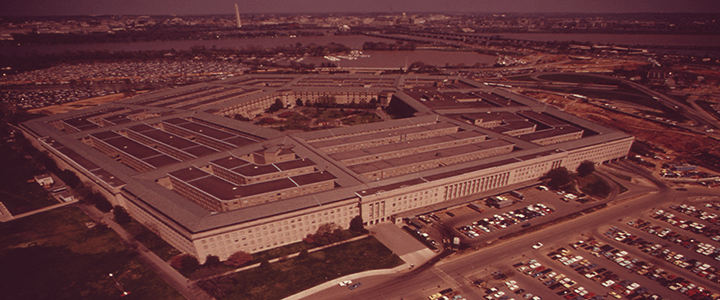Throughout the month of June, US Government organizations commemorated National LGBT Pride Month in various ways. Even the Library of Congress has hosted events this month celebrating how LGBT Americans have strengthened the nation “using their talent and creativity to help create awareness and goodwill.” But perhaps it was the Department of Defense that has garnered the most attention. In a June 12th ceremony, the Pentagon celebrated its 6th annual LGBT pride event. Anthony Kurta, who is currently performing the duties of Under Secretary of Defense for Personnel and Readiness, noted that “Diversity is more than race, gender, and ethnicity. It includes, among other things, the diversity of thought.” Mr. Kurta continued with other examples of diverse talents and skills that make a strong DoD. His words inspired reflection on the notable journey DoD has made to its present day policies.
In 1981, after a Joint Service Administrative Study’s recommendations, DoD issued a policy that “homosexuality is incompatible with military service.” In cases where homosexual acts were committed between two consenting adults, individuals would receive an honorable discharge. In 1992, the Government Accountability Office reported that between 1980 and 1990, the cost of discharging the roughly 17,000 service members under the policy was $120,722.00 per officer and $28,266.00 per enlisted member. A year later in 1993, a study by the RAND National Defense Research Institute suggested that sexual orientation is “not germane to determining who should serve in the military.” That same year, President Clinton announced his “don’t ask, don’t tell, don’t pursue” policy, which was seen as a compromise that was acceptable to both Congress, the administration and the DoD. What became to be known as the Don’t Ask Don’t Tell (DODT) stayed in effect until 2010, when then Secretary of Defense Robert Gates directed a review on implementing a repeal. The review found that more than two-thirds of service members surveyed did not object to gays and lesbians serving openly in uniform, and that repealing DODT would impose minimal risk to military readiness. This led to the House and Senate passing the bill to repeal DODT, and President Obama signing it into law in December 2010.
DoD’s Current LGBT Policy
Since the repeal of DODT in 2011, DoD’s policy has been that sexual orientation is a personal choice and private matter. DoD components are not allowed to request, collect or maintain information about the sexual orientation of service members, except when it is an essential part of an otherwise appropriate investigation or official action. Compared to DoD’s 1981 policy that stated homosexuality undermines “good order, discipline, and morale” and the ability to maintain “public acceptability of military service,” this is quite a change in only two decades. And in June 2016, after a RAND study determined the cost and readiness impacts of transgender service would be minimal, then Secretary of Defense Ashton Carter announced DoD’s new policy that allows transgender service members.
Impact on National Security
Until 2011, sexuality was considered not only a disqualifier for military service, but grounds to deny a security investigation. In fact, part of the DoD’s 1981 policy included rationale that homosexual conduct was a breach of security. When it came to threats to national security, homosexuality was in the same category as gambling, racketeering, enabling human trafficking and a host of other illegal activities. It was not being gay or lesbian, but the need to maintain secrecy about one’s sexual orientation that made a person a security risk. Because there’s no longer anything to hide, it’s simply no longer relevant.
Impact on DoD Individuals and Teams
Gay and lesbians who served before 2011’s DODT repeal could not share aspects of their personal life which would render them ineligible for military service. This created a gap in what could be shared among comrades in arms. Ask a gay or lesbian veteran who struggled with depression or even alcoholism, and you might hear it was related not to their sexuality, but the enforced secrecy with their fellow service members, with whom they shared so many other professional intimacies. LGBT members can now share as much or as little as they like about their lives and families, and those choices are based on trust and cohesion with fellow servicemembers and other teammates.
DoD’s Report Card
It’s too early for DoD to have accumulated data about the percentage of gays, lesbians, and transgenders currently serving, but it will eventually be available. Meanwhile, DoD’s evolution reflects an ability to respond to a changing social landscape, and the willingness to recruit and leverage skills to further national security interests based on only the criteria that matters. Back to Mr. Kurta’s message on June 2th, “We take pride in the contributions of all who defend and serve our country, and rely on the diversity of our members to meet our mission,” crystallizes DoD’s policy. Moving forward as a team – more diversely than ever.

